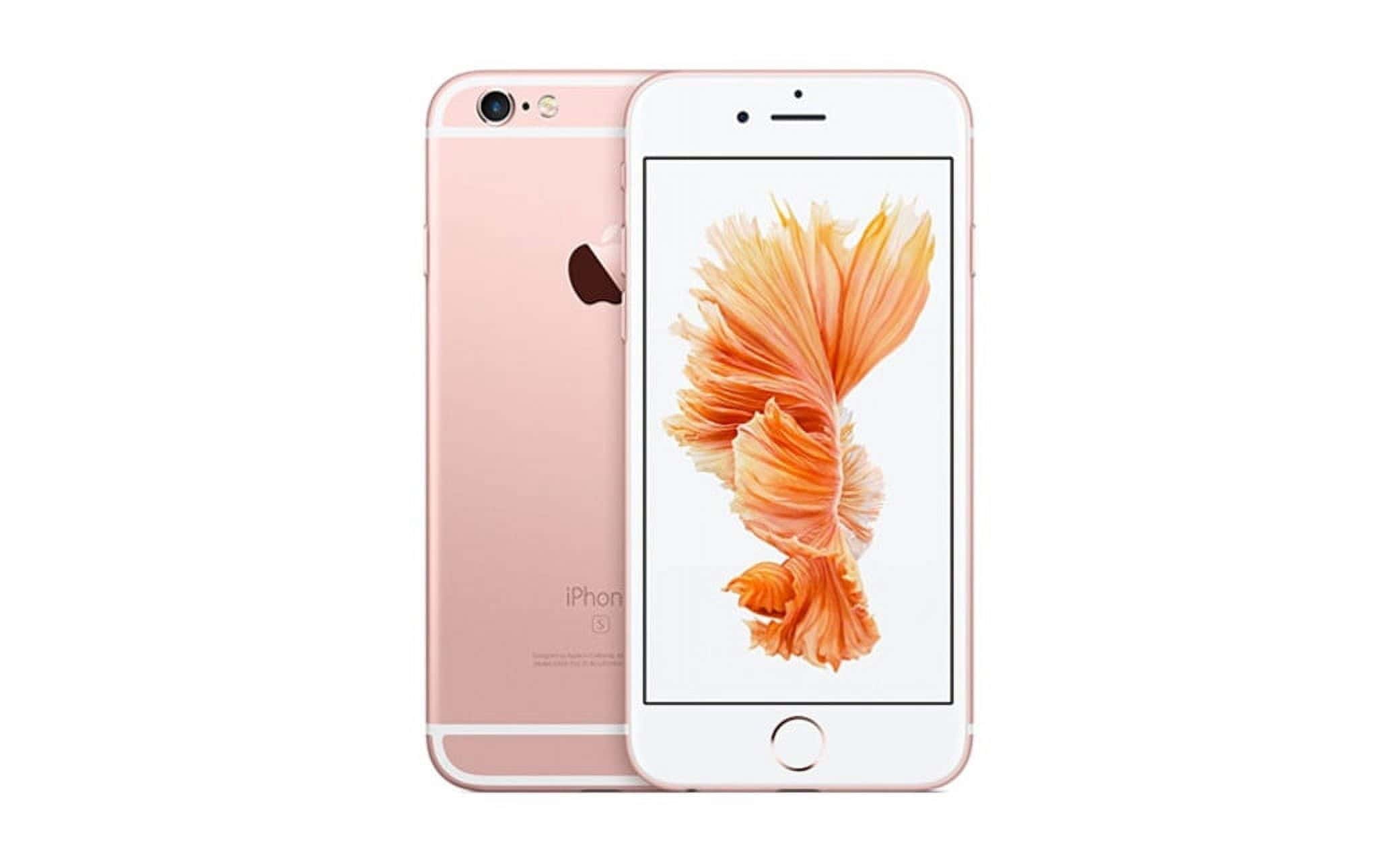The iPhone 6S, released in 2015, marked a significant step forward in Apple’s smartphone lineup. This model introduced several key features that set it apart from its predecessors. The iPhone 6S boasts a 12-megapixel rear camera, 2GB of RAM, and 3D Touch technology, offering users enhanced performance and interaction capabilities.
The iPhone 6S introduced features such as 3D Touch, Live Photos, and ran on the A9 chip, offering significant performance improvements. It has a 4.7-inch Retina HD display, a 12MP iSight camera capable of recording 4K video, and a 5MP front-facing camera with Retina Flash. Storage options ranged from 16GB to 128GB. While now considered a legacy device, the iPhone 6S serves as a benchmark for mobile technology advancements and highlights the evolution of smartphones in terms of processing power and camera capabilities.
| Feature | Specification |
|---|---|
| Display | 4.7-inch Retina HD |
| Processor | Apple A9 chip |
| RAM | 2GB |
| Rear Camera | 12 MP |
| Front Camera | 5 MP |
| Storage | 16GB/64GB/128GB |
| Battery | 1715 mAh |
iPhone 6S: A Look Back at the Specifications
Key Specifications of the iPhone 6S
The iPhone 6S, released in September 2015, brought several notable improvements over its predecessor. While it’s no longer the newest model, understanding its specifications provides context for how iPhones have evolved. Here’s a summary of its key features:
- Display: 4.7-inch Retina HD display (1334 x 750 pixels) with 326 ppi
- Processor: Apple A9 chip with 64-bit architecture
- RAM: 2GB
- Storage: 16GB, 32GB, 64GB, or 128GB (depending on the model)
- Rear Camera: 12MP iSight camera with Focus Pixels, optical image stabilization (on 6S Plus only), and 4K video recording
- Front Camera: 5MP FaceTime HD camera with Retina Flash
- Operating System at Launch: iOS 9
- Other Features: 3D Touch, Touch ID (1st generation), Live Photos
Detailed Breakdown of Important Features
Let’s look more closely at some of the key specifications:
Display
The iPhone 6S featured a 4.7-inch Retina HD display. This offered a resolution of 1334 x 750 pixels, resulting in a pixel density of 326 pixels per inch (ppi). This provided sharp images and text for everyday use.
Processor and Performance
The A9 chip was a significant upgrade at the time. It offered much better CPU and GPU performance compared to the A8 chip in the iPhone 6. This meant faster app launches, smoother multitasking, and better graphics for gaming. The 2GB of RAM, while modest by today’s standards, was enough for most tasks at the time.
Camera Capabilities
The iPhone 6S brought a significant camera upgrade. The rear camera was bumped to 12MP from 8MP, allowing for higher-resolution photos. It also introduced Focus Pixels for faster autofocus and 4K video recording. The front-facing camera also got an upgrade to 5MP, and Apple introduced Retina Flash, which used the display to illuminate selfies. The 6S Plus also had Optical Image Stabilization (OIS) on the rear camera, which helped reduce blur in photos and videos, especially in low light.
3D Touch
One of the standout features of the iPhone 6S was 3D Touch. This technology allowed the display to sense different levels of pressure. This enabled new ways to interact with the phone, such as “peeking” at content without fully opening it or accessing quick actions from app icons.
Storage Options
The iPhone 6S was available in several storage configurations: 16GB, 32GB, 64GB, and 128GB. The 16GB option quickly became insufficient for many users, as photos, videos, and apps took up more space.
Comparing the iPhone 6S to Later Models
The iPhone 6S, while innovative for its time, is quite dated by today’s standards. Modern iPhones offer significantly better displays, much faster processors, more RAM, improved cameras, and new features like Face ID.
| Feature | iPhone 6S | Modern iPhone (Example: iPhone 15) |
|---|---|---|
| Processor | A9 | A17 Pro |
| RAM | 2GB | 6GB or 8GB |
| Main Camera | 12MP | 48MP |
| Biometric Authentication | Touch ID (1st gen) | Face ID |
| Display Technology | Retina HD (LCD) | Super Retina XDR (OLED) |
The iPhone SE (2020 and 2022) as a Modern Comparison
While the iPhone 6S itself is older, Apple released two newer iPhone SE models (in 2020 and 2022) that used the same basic design as the iPhone 8 and iPhone 6 lines, respectively. These models offered more modern processors and camera technology at a lower price point. The 2022 SE, for example, has the A15 Bionic chip, the same chip found in the iPhone 13 series. This offers a substantial performance boost over the A9 in the iPhone 6S.
Design and Build
The iPhone 6S boasts a sleek and premium design. It maintains the aesthetic of its predecessor while introducing new color options and improved materials.
Dimensions and Weight
The iPhone 6S measures 5.44 x 2.64 x 0.28 inches (138.3 x 67.1 x 7.1 mm). Its slim profile makes it comfortable to hold and easy to slip into a pocket or purse. The device weighs 5.04 ounces (143 grams), striking a balance between lightweight portability and sturdy construction.
The iPhone 6S Plus, the larger variant, offers a bigger screen for those who prefer more display real estate. It features a larger footprint while maintaining a similar design language to its smaller sibling.
Materials and Colors
Apple crafted the iPhone 6S using high-quality materials. The device’s frame is made of 7000 series aluminum, which is stronger than the alloy used in previous models. This improvement addresses concerns about bending that some users reported with the iPhone 6.
You can choose from four color options:
- Silver
- Gold
- Space Gray
- Rose Gold (a new addition to the lineup)
The front of the device features a glass display with curved edges that blend seamlessly into the aluminum body. This design choice enhances both aesthetics and handling comfort.
| Feature | iPhone 6S | iPhone 6S Plus |
|---|---|---|
| Display | 4.7-inch | 5.5-inch |
| Weight | 143g | 192g |
| Thickness | 7.1mm | 7.3mm |
The build quality of the iPhone 6S is highly rated, with many users praising its premium feel and durability.
Display
The iPhone 6s features a high-quality display with advanced technologies. It offers crisp visuals and responsive touch input for an enhanced user experience.
Screen Technology
The iPhone 6s uses an IPS LCD display with multi-touch capability. This technology provides wide viewing angles and accurate color reproduction. The screen incorporates dual-domain pixels to further improve visibility from different angles.
Apple added 3D Touch to the 6s, allowing the display to sense different levels of pressure. This feature enables new ways to interact with apps and content. The display also has a fingerprint-resistant oleophobic coating to reduce smudges.
Screen Size and Resolution
The iPhone 6s has a 4.7-inch diagonal screen. Its resolution is 1334 x 750 pixels, resulting in a pixel density of 326 ppi (pixels per inch). This qualifies as a Retina display, where individual pixels are indistinguishable at typical viewing distances.
The display offers a 1400:1 contrast ratio and 500 cd/m² typical maximum brightness. These specs ensure good readability in various lighting conditions. The screen supports the full sRGB color gamut for accurate color representation.
| Display Specs | Details |
|---|---|
| Size | 4.7 inches |
| Resolution | 1334 x 750 pixels |
| Pixel Density | 326 ppi |
| Technology | IPS LCD |
| Features | 3D Touch, oleophobic coating |
Hardware and Performance
The iPhone 6S boasts significant improvements in processing power and memory. These upgrades enhance the device’s speed and capabilities for various tasks.
Chipset and Memory
The Apple A9 chipset powers the iPhone 6S. This dual-core processor runs at 1.84 GHz, providing snappy performance for everyday use and demanding apps. The A9 chip includes an embedded M9 motion coprocessor for fitness tracking and always-on “Hey Siri” functionality.
Graphics processing is handled by a PowerVR GT7600 GPU with six cores. This setup delivers smooth visuals for games and multimedia applications.
The iPhone 6S comes with 2 GB of RAM, doubling the memory of its predecessor. This boost in RAM allows for better multitasking and app performance.
Storage options include 16 GB, 64 GB, and 128 GB variants. The increased memory and storage options give you more flexibility for apps, photos, and media.
| Component | Specification |
|---|---|
| Chipset | Apple A9 (APL0898) |
| CPU | Dual-core 1.84 GHz |
| GPU | PowerVR GT7600 (6-core) |
| RAM | 2 GB |
| Storage | 16/64/128 GB |
These hardware improvements result in faster app launches, smoother scrolling, and quicker task completion compared to earlier iPhone models.
Camera and Photography
The iPhone 6S boasts significant improvements in camera technology. It offers enhanced image quality and new features for both photography and video recording.
Main Camera Specifications
The iPhone 6S features a 12-megapixel rear camera, a notable upgrade from its predecessor. This iSight camera includes a five-element lens and an f/2.2 aperture. The device incorporates advanced pixel technology and Focus Pixels for improved autofocus.
A sapphire lens cover protects the camera, ensuring durability. The true tone dual-LED flash helps capture better low-light photos. Apple’s new image signal processor works with the camera to deliver sharper, more vibrant images.
Here’s a quick breakdown of the main camera specs:
| Feature | Specification |
|---|---|
| Megapixels | 12 |
| Aperture | f/2.2 |
| Lens Elements | 5 |
| Flash | True tone dual-LED |
| Autofocus | Focus Pixels |
Photography and Video Features
The iPhone 6S introduces several new photography and video capabilities. You can now capture 4K video at 30 frames per second, allowing for incredibly detailed recordings. The optical image stabilization helps reduce shake in your videos and photos.
For still photography, the device offers improved local tone mapping. This feature enhances the dynamic range of your images, resulting in more balanced exposures. The camera app includes various shooting modes like panorama, time-lapse, and slow-motion video.
A noteworthy addition is Live Photos. This feature captures 1.5 seconds of video before and after you take a picture, bringing your memories to life. You can also use voice commands like “take photo” to control the camera hands-free.
Frequently Asked Questions
The iPhone 6s offers several key features and specifications. These include camera capabilities, storage options, display details, release timing, memory, and battery capacity.
What are the camera specifications of the iPhone 6s?
The iPhone 6s features a 12-megapixel rear camera capable of recording 4K video. It also includes a 5-megapixel front-facing camera for selfies and video calls.
The rear camera has an f/2.2 aperture and supports features like Live Photos and panoramas up to 63 megapixels.
How much internal storage does the iPhone 6s offer?
You can choose from 16GB, 64GB, or 128GB storage options for the iPhone 6s. The device does not support expandable storage via microSD cards.
What is the screen size and resolution of the iPhone 6s?
The iPhone 6s has a 4.7-inch display with a resolution of 1334×750 pixels. This results in a pixel density of 326 pixels per inch (ppi).
The screen uses IPS LCD technology and features 3D Touch for pressure-sensitive interactions.
What year was the iPhone 6s originally released?
Apple introduced the iPhone 6s on September 9, 2015. It became available for purchase later that month.
How much RAM does the iPhone 6s have?
The iPhone 6s comes equipped with 2GB of RAM. This was an upgrade from its predecessor, the iPhone 6, which had 1GB of RAM.
What is the battery capacity of the iPhone 6s?
The iPhone 6s has a battery capacity of 1715mAh. Apple claims this provides up to 14 hours of talk time on 3G or up to 10 hours of internet use on LTE.
| Feature | Specification |
|---|---|
| Rear Camera | 12 MP |
| Front Camera | 5 MP |
| Storage Options | 16GB, 64GB, 128GB |
| Screen Size | 4.7 inches |
| Resolution | 1334×750 |
| Release Year | 2015 |
| RAM | 2GB |
| Battery Capacity | 1715mAh |







